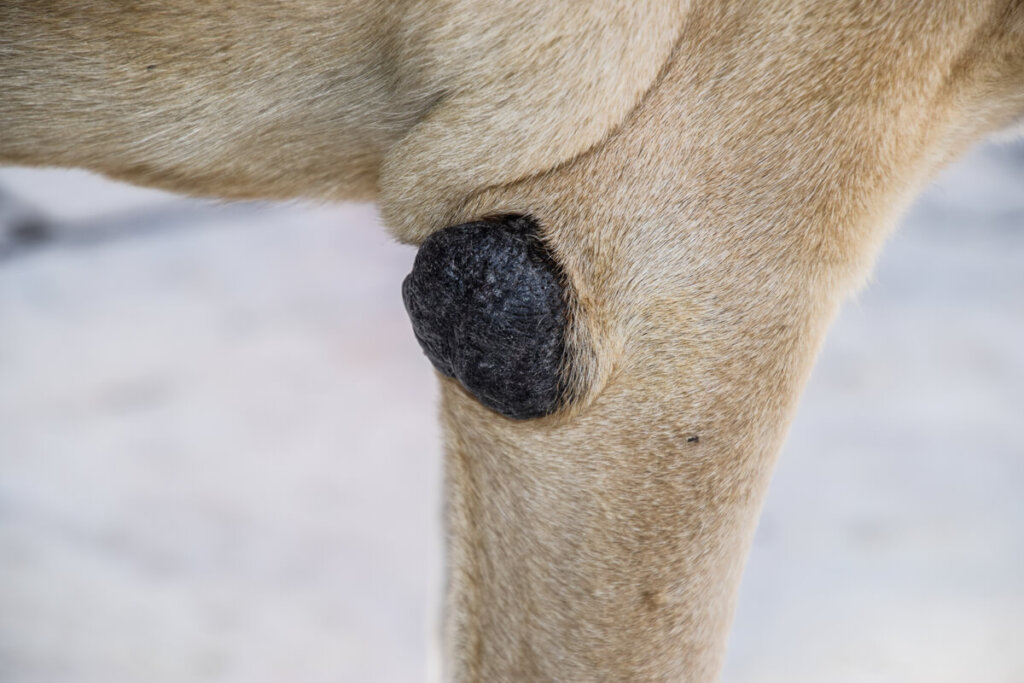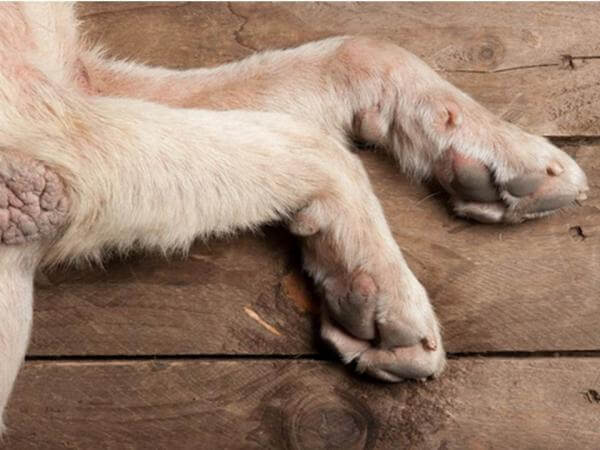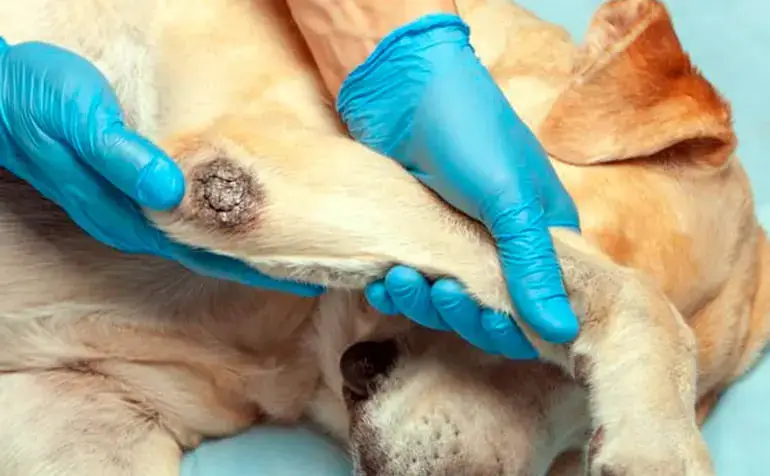5 Tips to Treat Elbow Calluses on Dogs

According to the Illustrated Handbook of Dog and Cat Skin Diseases, a callus is an area of hyperkeratosis that usually appears at bony pressure points. In this case, elbow calluses on dogs are the product of the constant friction of the forelimb with a hard or rough surface.
In more practical terms, what happens is that the skin of the elbow hardens to give protection to the ulna bone, with the aim of softening the impact on this area when the animal lies down.
Although they aren’t a serious problem for our pet, we must pay attention to them to avoid the development of other pathologies. Continue reading these lines and learn the best strategies to prevent and treat the formation of calluses on the elbows.
Main causes of elbow calluses on dogs
This type of problem is more common in large breeds such as Great Danes, Labradors and Saint Bernards. This is due to the fact that, as they have a greater weight and size, they exert more pressure on the elbows when lying on the ground. Likewise, short-haired breeds are more predisposed to develop them due to the direct contact of the skin with the surface.
According to the above and taking into account other medical aspects, the main causes that favor the appearance of calluses in dogs are the following:
- Sleeping or resting on hard surfaces such as cement, wood, or tiles
- Overweight or thinness
- Soft beds that allow the elbows to come in contact with the floor
- Joint diseases that cause the dog to lie down

How to manage calluses on dogs
Taking into account that these lesions can evolve into more serious skin problems such as ulcers or pyodermas, the best thing is to attend to them in a timely manner. In the following space, you will find the ideal tips to manage calluses on dogs.
1. Apply moisturizing creams on the elbows
One of the best strategies for the management of these calluses are moisturizing creams. Thanks to these products we can soften the rough skin and provide flexibility to the affected area. Creams containing salicylic acid, sodium lactate, and urea are recommended to promote the desquamation of the stratum corneum formed. In addition, if they contain aloe vera and vitamin E, we’ll prevent the skin from drying out and cracking.
2. Provide a comfortable and soft place to rest
As mentioned above, the friction of the elbows with the hard ground is the main cause of calluses in this area. Hard or rough surfaces such as concrete or wood lead to wear and subsequent thickening of the skin.
To avoid this, make sure your pet’s bedding is comfortable and soft enough for him to lie on. Similarly, the use of rugs in different parts of the home will prevent your dog’s elbows from being in direct contact with the floor.
3. Avoid being overweight or extremely thin
According to the Illustrated Handbook of Dog and Cat Skin Diseases, both obesity and thinness are risk factors for the development of calluses. On the one hand, having more body mass, the pressure exerted on the elbows when lying down will be more intense.
On the other hand, if there is little musculature and little fatty tissue in this area, the ulna bone will be more exposed to friction with hard surfaces. This is why we must make sure that our pet maintains an optimal physical condition with an adequate diet.

4. Use bandages
One of the most practical tips for when the callus is ulcerated is the use of bandages. In this case, you’ll protect the affected area to prevent it from remaining in contact with the ground. In this way, you’ll prevent the lesion from growing or becoming infected. Normal bandages, adhesive bandages, or dressings can be used.
5. Consult a veterinarian promptly
While it’s true that most cases can be treated at home, a professional’s viewpoint will never be superfluous. A prompt consultation will identify other probable pathologies that are causing these lesions, such as osteoarthritis or hypothyroidism.
Similarly, in cases where there are complications such as ulcers or pyoderma, a veterinarian will know how to identify them to give them the appropriate treatment.
Now that you know the main strategies to prevent and manage calluses on the elbows, it’s your duty to strengthen your knowledge to give the welfare your pet deserves. Remember to always ask for a professional’s opinion in complicated cases and avoid the use of non-prescribed medications.
All cited sources were thoroughly reviewed by our team to ensure their quality, reliability, currency, and validity. The bibliography of this article was considered reliable and of academic or scientific accuracy.
- Walder EJ, Gross TL, Ihrke PJ, Affolter VK. Comments on study of paw pad lesions in dogs. Journal of the American Veterinary Medical Association. 2009;235(6):657-8; author reply 8-9.
- Harvey R, Mckeever P. Manual ilustrado de enfermedades de la piel del perro y el gato. Grass Edicions; 2010.
- Brusa M. Compendio de enfermedades de los caninos y felinos domésticos. Universidad de la Plata; 2014.
